Today's digital landscape is dominated by video content. With 85% of businesses using video as a marketing tool and 92% considering it an essential strategy component, video has become vital for brands seeking meaningful audience connections. Yet despite its proven effectiveness, many businesses hesitate due to persistent myths about video marketing.
Video Marketing Myth #1: Video Marketing Is Too Expensive for Small Businesses
If you run a small business, you've likely hesitated to dive into video marketing because of cost concerns. It's a common perception that creating professional videos requires expensive equipment, seasoned professionals, and a budget that only large corporations can afford. But this widespread belief is more myth than reality.
The Reality vs. The Myth
The truth is that video marketing has become remarkably more accessible in recent years. Technology advancements have democratized video production, putting powerful tools in the hands of businesses of all sizes. Many successful social media videos for brands are actually shot using smartphones, not expensive professional cameras.
Modern smartphones can shoot high-quality 1080p HD video, which is more than sufficient for most marketing purposes. When paired with good lighting (which can be achieved inexpensively) and a stable mounting solution (a basic tripod costs under $30), your smartphone can produce remarkably professional results.
Cost-Effective Video Strategies for Any Budget
You don't need to break the bank to create effective video content. Here are some approaches that work:
- Leverage smartphone technology: Today's smartphones have impressive video capabilities that rival dedicated cameras from just a few years ago.
- Use affordable editing tools: Software like iMovie (free for Mac users), DaVinci Resolve (free version available), or Canva (free version with paid upgrades) provide powerful editing capabilities without the hefty price tag.
- Focus on content over production: One of the most compelling examples of effective low-budget video marketing is simple whiteboard explainer videos—simple production but incredibly valuable content.
- Repurpose existing content: Transform blog posts, presentations, or infographics into video format to maximize your existing assets.
- Start small and scale up: Begin with simple videos and reinvest in your equipment and skills as you see returns. Many small businesses find that video marketing actually delivers stronger ROI than their other marketing efforts.
The most important factor in video marketing isn't the production budget—it's creating content that resonates with your audience. With today's technology and some creativity, you can produce engaging videos that connect with your customers without a massive investment.
Video Marketing Myth #2: You Need Professional Equipment and Expertise
When it comes to video marketing, one of the most persistent myths is that you need expensive equipment and professional expertise to create effective videos. Let me set the record straight: modern technology has leveled the playing field.
Today's Technology Puts Quality in Everyone's Hands
The smartphone in your pocket is likely more powerful than video equipment that cost thousands of dollars just a decade ago. Consider these facts:
- Modern smartphones shoot high-quality 1080p HD video (and often 4K)
- Many successful social media videos for brands are shot using smartphones
- Free or low-cost editing tools make post-production accessible to everyone
While professional equipment can certainly enhance your video quality, it's far from a requirement to get started and see results from your video marketing efforts.
Why Authenticity Often Outperforms Production Value
Perhaps most surprising is that viewers often respond better to authentic content than over-produced videos. Content that feels too polished can sometimes come across as less trustworthy or relatable.
You don't need a big budget or professional equipment to create a great video. This is especially true for social media content, where authenticity resonates more than perfect lighting or cinematic camera movements.
Many brands have discovered that behind-the-scenes content, day-in-the-life videos, and other authentic formats generate more engagement than high-production commercials. What matters most is that your content provides value, tells a compelling story, or connects emotionally with your audience.
Remember that viewers often watch videos to learn something, be entertained, or connect with your brand—not to admire your camera equipment. Focus on creating content that genuinely serves your audience's needs, and you'll see results regardless of your production budget.
Explore how Firework's one-to-one virtual shopping solution makes authentic video connections easy →
Video Marketing Myth #3: Video Content Doesn't Drive Measurable ROI
One of the most persistent myths about video marketing is that its return on investment is difficult to quantify. Many marketers shy away from investing in video content because they believe they won't be able to justify the expense with clear performance data. This assumption is outdated in today's analytics-rich digital environment.
Modern analytics tools provide comprehensive insights into exactly how your videos are performing. In fact, 87% of business owners report being satisfied with the ROI their video marketing efforts deliver. The key is knowing which metrics to track and how to set up proper measurement frameworks.
The Metrics That Matter Beyond Views
While view count is the most obvious metric, it's just the tip of the iceberg when measuring video performance:
- Engagement metrics: Watch time, completion rate, and drop-off points reveal how compelling your content truly is
- Conversion rates: Track how many viewers take desired actions after watching your videos
- Time on site: Videos typically increase the amount of time visitors spend on your pages
- Lead generation metrics: Measure how many qualified leads your videos produce
- Brand lift: Assess changes in awareness, perception, and recall
By looking beyond simple view counts, you can understand how your video content influences the customer journey at every stage—from awareness through consideration to decision.
Setting Up a Video ROI Measurement Framework
To accurately measure video ROI, you need a structured approach:
- Align with business objectives: Before creating videos, define clear goals—whether that's increasing brand awareness, generating leads, or driving sales.
- Implement proper tracking: Use UTM parameters in your video links to track traffic sources.
- Set up conversion tracking: Ensure your analytics tools can attribute conversions back to specific videos.
- Create custom dashboards: Aggregate key performance indicators in one place for easy monitoring and reporting.
- Establish benchmarks: Compare performance against industry standards and your own historical data to gauge success.
The most successful video marketers take this process a step further by attributing actual revenue to their video efforts. For example, by tracking customers who watched specific product videos before making a purchase, you can calculate the direct impact on your bottom line.
Learn how Firework's shoppable video solutions deliver measurable ROI for your business →
Video Marketing Myth #4: Video Marketing Only Works for Certain Industries
One of the most persistent misconceptions in marketing is that video is only effective for visually appealing products or consumer-facing brands. Many B2B companies, healthcare providers, manufacturers, and financial services firms hesitate to invest in video because they don't see themselves as "video-friendly" industries. However, research and case studies consistently demonstrate that video marketing can be highly effective across virtually every sector.
Success Stories Across Diverse Sectors
Video marketing success isn't limited to flashy consumer products. Consider these examples:
- Software and Technology: Time tracking software companies successfully use video marketing to translate complex software solutions into engaging, easy-to-understand content that captivates their target audience.
- Apparel and Footwear: Performance apparel companies leverage video to highlight their products in action, offering an interactive shopping experience and showcasing user-generated content from brand advocates.
- B2B Services: Companies in traditionally "dry" industries like manufacturing, logistics, and professional services have found success with behind-the-scenes videos, customer testimonials, and process demonstrations that build trust and showcase expertise.
- Healthcare: Medical providers use video to explain procedures, introduce staff, and educate patients, creating content that balances being informative while maintaining patient privacy and regulatory compliance.
- Finance: Banks and investment firms have found success with explainer videos that break down complex financial products and services into digestible, engaging content.
Adapting Video Strategies to Your Industry
Rather than asking whether video works for your industry, the better question is how to adapt video to your specific needs:
- Consider your sales cycle: B2B industries with longer sales cycles might focus on in-depth, educational content, while B2C companies with shorter conversion paths might prioritize quick, engaging videos.
- Platform selection: Different industries find success on different platforms. Professional services often perform better on LinkedIn, while visually-focused brands might thrive on Instagram or TikTok.
- Content complexity: Tech industries often need detailed explainer videos, while consumer goods might focus more on lifestyle and emotional appeal.
- Regulatory environment: Industries like healthcare and finance must ensure compliance in their video content, which may influence the approach but doesn't diminish effectiveness.
The effectiveness of video marketing varies across industries not because it "doesn't work" for some, but because each industry requires a tailored approach. According to a Wyzowl study, 93% of marketers say video has helped them increase brand awareness across industries.
See how Firework's digital showroom solutions can be customized for your specific industry →
Video Marketing Myth #5: Longer Videos Don't Perform Well in Today's Short Attention Economy
In a world of TikTok and Instagram Reels, it's easy to believe that video content needs to be bite-sized to be effective. The reality is much more nuanced. While short-form content certainly has its place, dismissing longer videos altogether is a mistake that could cost you valuable engagement opportunities.
The truth is that the ideal video length depends on various factors, including your platform, audience, and most importantly, the value you're delivering. Let's examine why longer videos can still thrive and how to determine the right length for your content.
Platform-Specific Length Optimization
Different platforms have different sweet spots when it comes to video length:
- YouTube: Videos between 7-15 minutes tend to perform best for most topics. YouTube's algorithm favors watch time, making it an ideal platform for more in-depth content.
- TikTok: The recommended length is 21-34 seconds, though the platform now allows videos up to 10 minutes.
- Instagram Reels: Up to 90 seconds, with 7-15 seconds often generating the most engagement.
- LinkedIn: Professional content under 3 minutes typically performs best in the feed.
The key is understanding each platform's unique environment and optimizing accordingly. Focus on creating content that provides value to your audience, regardless of length.
When Longer Content Drives Better Results
Despite the push toward shorter content, there are many scenarios where longer videos outperform their briefer counterparts:
- Educational content: Tutorials, how-to guides, and in-depth explanations often need more time to deliver comprehensive value.
- Complex products or services: Some offerings require detailed explanations that simply can't be condensed into 30 seconds.
- Storytelling: Emotional narratives often need time to develop and resonate with viewers.
For YouTube specifically, longer videos (10-20 minutes) often drive higher engagement for content that warrants that length. This is because audience intent on YouTube differs from social platforms – viewers often come seeking information or entertainment, not just quick distractions.
Remember, the best video length is determined by how long it takes to effectively communicate your message—not a second more, not a second less. Quality content that keeps viewers engaged will always outperform arbitrary length restrictions.
Discover how Firework's flexible video solutions adapt to your content length needs →
Video Marketing Myth #6: Video Marketing Success Depends Primarily on View Count
When evaluating video marketing performance, many marketers and business owners fixate on view counts as the primary success metric. This singular focus can be deeply misleading and may prevent you from understanding the true impact of your video content.
Beyond Vanity Metrics: What Really Indicates Success
View counts tell an incomplete story. While they provide a general sense of reach, they don't reveal much about audience engagement or business impact. Consider these critical factors:
- Platform inconsistencies: Different platforms count views differently. YouTube counts a view after 30 seconds of watch time, while Facebook counts after just 3 seconds. This fundamental difference makes cross-platform comparisons based solely on views practically meaningless.
- Watch time and completion rate: How much of your video are people actually watching? A video with fewer views but higher completion rates likely delivers your message more effectively than a widely-viewed video that most people abandon after a few seconds.
- Engagement actions: Comments, shares, likes, and clicks demonstrate active engagement rather than passive viewing. These metrics often correlate more strongly with business outcomes than raw view counts.
- Conversion actions: Did viewers take your desired action after watching? Whether it's signing up for a newsletter, requesting information, or making a purchase, conversion metrics directly connect your video content to business results.
Aligning Video Metrics with Business Goals
The most meaningful video metrics are those that align with your specific business objectives. Consider these approaches:
- For brand awareness campaigns, focus on reach, impression share, and brand lift metrics rather than just views.
- For educational content, prioritize average view duration and retention rates to ensure your message is being fully consumed.
- For lead generation videos, measure click-through rates and conversion metrics to determine how effectively your video moves viewers through your sales funnel.
- For customer testimonials, track metrics like influenced conversions and share rate to evaluate how the content builds trust.
Remember, algorithms across social platforms now prioritize meaningful engagement over simple views. YouTube's algorithm, for instance, heavily weights watch time and engagement signals when recommending content, making these metrics far more valuable than view counts alone for sustainable growth.
Learn how Firework's analytics provide deeper insights than just view counts →
Video Marketing Myth #7: You Can't Effectively Personalize Video Content
Many marketers believe personalization isn't possible with video content, assuming it's too resource-intensive or technically challenging. This myth stems from outdated perspectives on video production that don't account for recent technological advancements.
Modern Personalization Technologies
Today's video personalization capabilities go far beyond simply adding a customer's name to the opening frame. Modern tools allow for:
- Dynamic content insertion based on viewer data
- Automatically customized visuals and messaging for different audience segments
- Real-time adaptation of video content based on viewer preferences and behaviors
- AI-powered personalization at scale
These technologies make it possible to deliver tailored video experiences without rebuilding content from scratch for each viewer. According to a Wyzowl study, personalized videos can increase engagement dramatically, with personalized product videos increasing click-through rates by up to 230%.
The personalization can range from simple touches like customized greetings to sophisticated approaches like completely different storylines based on viewer characteristics. AI tools can now analyze viewer data to suggest personalization strategies that maintain brand authenticity while driving better results.
Implementation Strategies for Businesses of Any Size
You don't need an enterprise-level budget to implement effective video personalization. Here are practical approaches that work for businesses of any size:
- Start with segmentation: Divide your audience into clear segments based on demographics, behavior, or purchase history, then create video variants for each major segment.
- Leverage dynamic elements: Use platforms that allow you to swap out specific elements within videos (like text overlays, product images, or CTAs) while keeping the main footage consistent.
- Implement viewing data: Track how viewers interact with your videos and use those insights to refine future personalization efforts.
- Test and iterate: Begin with simple personalization elements and measure their impact before investing in more complex approaches.
Case in point: An e-commerce brand created personalized product videos showing items based on previous purchase history, integrating the customer's name and preferences. This approach increased click-through rates by 230% compared to generic product videos.
The key is finding the right balance between personalization and scalability. Too much customization can make production unwieldy, while too little renders the personalization ineffective. Start with clearly defined audience segments and create targeted variations that speak to their specific needs and interests, then scale up your personalization strategy as you see results.
Explore how Firework's AVA technology personalizes shopping experiences →
Video Marketing Myth #8: Video Marketing Takes Too Long to Implement and Scale
One of the most persistent myths about video marketing is that it requires substantial time to implement and scale effectively. Many businesses delay starting their video marketing efforts because they believe the process will be too time-consuming. However, the reality is quite different.
Today's video creation landscape has evolved dramatically. With user-friendly editing tools and streamlined workflows, businesses of all sizes can implement video marketing strategies much faster than you might expect. According to research from Wyzowl, 93% of marketers say video has helped them increase brand awareness—making it worth finding efficient ways to incorporate it into your strategy.
Streamlined Production Workflows
Modern video production doesn't have to be complicated:
- Start with templates: Many video editing platforms offer pre-designed templates that significantly reduce production time.
- Batch production: Schedule dedicated filming days where you shoot multiple videos at once, saving setup and breakdown time.
- Leverage smartphone capabilities: Today's smartphones can shoot high-quality 1080p HD video, eliminating the need for expensive equipment and lengthy setup times.
- Implement a content calendar: Planning your video content in advance helps maintain consistency without last-minute rushes.
A streamlined workflow can take you from concept to published content in days rather than weeks. In fact, many service businesses have gone from zero video content to publishing weekly videos in under a month by establishing simple, repeatable processes.
Content Repurposing Strategies
One of the most efficient approaches to scaling your video marketing is through strategic content repurposing:
- Turn one long video into multiple short clips for social media
- Extract the audio to create podcast episodes
- Transcribe videos to create blog posts or articles
- Use screenshots for social media graphics
- Create GIFs from key moments for email marketing
This approach maximizes the value of each video asset you create. Rather than starting from scratch for each platform, you can adapt existing content to fit different formats and channels.
For example, an in-depth product demonstration video can be repurposed into:
- 30-second feature highlights for Instagram
- Step-by-step tutorial clips for TikTok
- Customer testimonial segments for your website
- Behind-the-scenes clips for LinkedIn
By implementing these streamlined workflows and repurposing strategies, you can create a sustainable video marketing program that delivers consistent content without overwhelming your team or resources. The key is to start simple, focus on quality over quantity, and gradually build your video library as you become more efficient with the process.
Discover how Firework's solutions make video implementation faster and easier →
Video Marketing Myth #9: Social Media Platform Analytics Provide Sufficient Measurement
When evaluating the success of your video marketing efforts, it's tempting to rely solely on the analytics dashboards provided by social media platforms. After all, they offer convenient metrics like views, likes, and shares right at your fingertips. However, these native analytics tell only a partial story of your video's true performance and impact.
The Limitations of Platform-Specific Data
One of the most significant challenges with platform analytics is the inconsistency in how each platform measures and reports video metrics. For instance:
- YouTube counts a view after 30 seconds of watch time
- Facebook and Instagram count a view after just 3 seconds
- TikTok counts a view immediately upon video start
This inconsistency makes it nearly impossible to compare performance across platforms or get a unified view of your video's success. These discrepancies can lead to misleading conclusions about which platforms are performing best.
Platform analytics also provide limited depth of insights. While you might see impressive view counts or engagement rates, these surface-level metrics don't necessarily indicate content quality or impact on your business goals. Platform analytics often fail to connect these engagement metrics to actual business outcomes.
Another critical limitation is the lack of context. High view counts don't automatically translate to business success or ROI. Engagement metrics like likes, comments, and shares don't always correlate with viewer intent or action that impacts your bottom line.
Additionally, most platform analytics struggle with attribution. It's difficult to track the user journey from video view to conversion, making it challenging to measure the long-term impact of your video content on brand perception or customer loyalty.
Building a Comprehensive Measurement Approach
To overcome these limitations, you need to implement a multi-faceted measurement strategy that goes beyond native platform metrics.
Start by integrating data from multiple platforms. Tools that aggregate analytics from various social media channels can provide a more holistic view of your video performance. This cross-platform approach allows you to identify patterns and insights that might be missed when looking at platforms in isolation.
Consider implementing custom video players or third-party hosting solutions that offer more detailed analytics. For example, some services provide heat maps that show second-by-second viewer engagement, helping you identify exactly where viewers lose interest or engage most deeply with your content.
Advanced audience analysis tools can provide deeper insights beyond basic demographics. Understanding your audience's behavior and preferences helps you create video content that genuinely resonates with your target market and drives business growth.
One of the most powerful approaches is combining on-platform metrics with website behavior data. By tracking how viewers interact with your site after watching your videos, you can uncover hidden ROI that platform analytics miss entirely. For instance, a viewer might not comment or share your video but could visit your website and make a purchase as a direct result of your content.
Implement advanced conversion tracking and attribution modeling to link video performance to business outcomes. Multi-touch attribution models can help you understand how video content contributes to the overall customer journey and conversion process, giving you a clearer picture of your true ROI.
See how Firework's comprehensive analytics provide deeper insights than platform metrics →
Video Marketing Myth #10: AI and New Technologies Make Traditional Video Marketing Obsolete
The rapidly evolving landscape of AI tools and technologies has led some marketers to worry that traditional video marketing strategies are becoming obsolete. This notion couldn't be further from the truth. Rather than replacing fundamental marketing principles, AI and new technologies serve to enhance and amplify them.
How AI Enhances Human Creativity
AI is revolutionizing how we approach video marketing, but it's important to understand its role as a powerful assistant rather than a replacement for human creativity:
- Content Creation Support: AI tools can generate video scripts, suggest content ideas, and even create visual elements, allowing marketers to produce content more efficiently while focusing their creative energy on strategic decisions.
- Personalization at Scale: AI enables unprecedented levels of personalization in video marketing. By analyzing viewer data, AI can help tailor content to specific audience segments, creating more relevant and engaging experiences.
- Streamlined Production: AI-powered editing tools can automate repetitive tasks like cutting clips, identifying key moments, and applying consistent visual styles, freeing up human creators to focus on storytelling and creative direction.
A perfect example of this synergy is how major brands demonstrate how AI can support creative content creation while maintaining the brand's unique identity and storytelling approach.
Maintaining Marketing Fundamentals in a Technology-Driven Landscape
While embracing new technologies, successful marketers understand the importance of staying grounded in core marketing principles:
- Strategy First, Technology Second: Always begin with clear marketing objectives and let those guide your use of AI tools. The most sophisticated technology won't compensate for a weak strategy or messaging.
- Authentic Brand Voice: Use AI to amplify your brand's authentic voice, not replace it. Leading brands brilliantly use AI-generated imagery to reinforce their brand associations while maintaining their distinctive brand personality.
- Human Oversight: Implement quality control processes where human marketers review AI-generated content to ensure it aligns with brand standards and messaging. The human touch remains essential for emotional connection and creative nuance.
- Ethical Considerations: Be transparent about AI usage and prioritize viewer privacy and consent in your marketing practices. Ethical implementation builds trust with your audience.
The most successful approach to integrating AI into video marketing is viewing it as an enhancement rather than a replacement. When used strategically, AI tools allow you to create more personalized content, gain deeper audience insights, and optimize your videos for better performance—all while preserving the human creativity and strategic thinking that form the foundation of effective marketing.
Explore how Firework's AVA technology combines AI with human authenticity →
Building an Effective Video Marketing Strategy Based on Facts, Not Myths
Now that we've debunked these common video marketing myths, it's time to focus on building a strategy based on facts rather than misconceptions. The good news? 87% of business owners report being satisfied with the ROI of their video marketing efforts. This indicates that even modest investments in video can yield significant benefits for businesses of all sizes.
Here's how to develop an effective video marketing approach:
Start with Clear Objectives
Before creating any videos, define what you want to achieve. Are you looking to increase brand awareness, generate leads, or drive sales? Your objectives will guide the type of content you create and how you measure success.
Know Your Audience
Understanding your target audience is crucial. What platforms do they use? What content resonates with them? Create viewer personas to help guide your content creation process.
Begin with a Modest Budget
Contrary to popular belief, you don't need expensive equipment or a massive budget to get started. Many successful brands began with simple smartphone videos and basic editing tools. As you see results, you can gradually scale up your investment.
Choose the Right Video Types for Your Goals
Different video formats serve different purposes:
- Explainer videos for introducing products or services
- How-to tutorials for building trust and authority
- Customer testimonials for social proof
- Behind-the-scenes content for authenticity
Focus on Content Quality Over Production Value
While high production value can be impressive, the content of your video matters most. A simple video with valuable information will outperform a flashy video with little substance. It's not just about visual appeal. You need to know your audience inside out, become an expert in your field, and be able to deliver content that's engaging.
Optimize for Search and Sharing
Implement video SEO practices like using descriptive titles, creating transcripts, and adding relevant tags to increase visibility. Also, make your videos easy to share across platforms to expand your reach.
Measure What Matters
Move beyond basic view counts to track metrics that align with your business goals, such as engagement rate, conversion rate, and return on investment.
Remember, successful video marketing isn't about following the latest trends or having the biggest budget—it's about creating content that resonates with your audience and drives real business results. With the right strategy in place, businesses of all sizes can leverage video to connect with customers, build brand awareness, and grow their bottom line.
Ready to Transform Your Video Marketing Strategy?
Don't let outdated myths hold your business back from the power of effective video marketing. Firework offers comprehensive solutions that make creating, implementing, and measuring video content easier than ever before.
Get Started with Firework Today →
Whether you're looking to implement shoppable videos, create a digital showroom, or leverage AI for personalized shopping experiences, Firework has the tools and expertise to help you succeed. Our platform is designed for businesses of all sizes across every industry, making professional video marketing accessible and effective.
Unlock Exclusive Insights
By submitting this form, you agree to Firework's privacy policy and consent to receive personalized marketing communications. You can unsubscribe at any time.
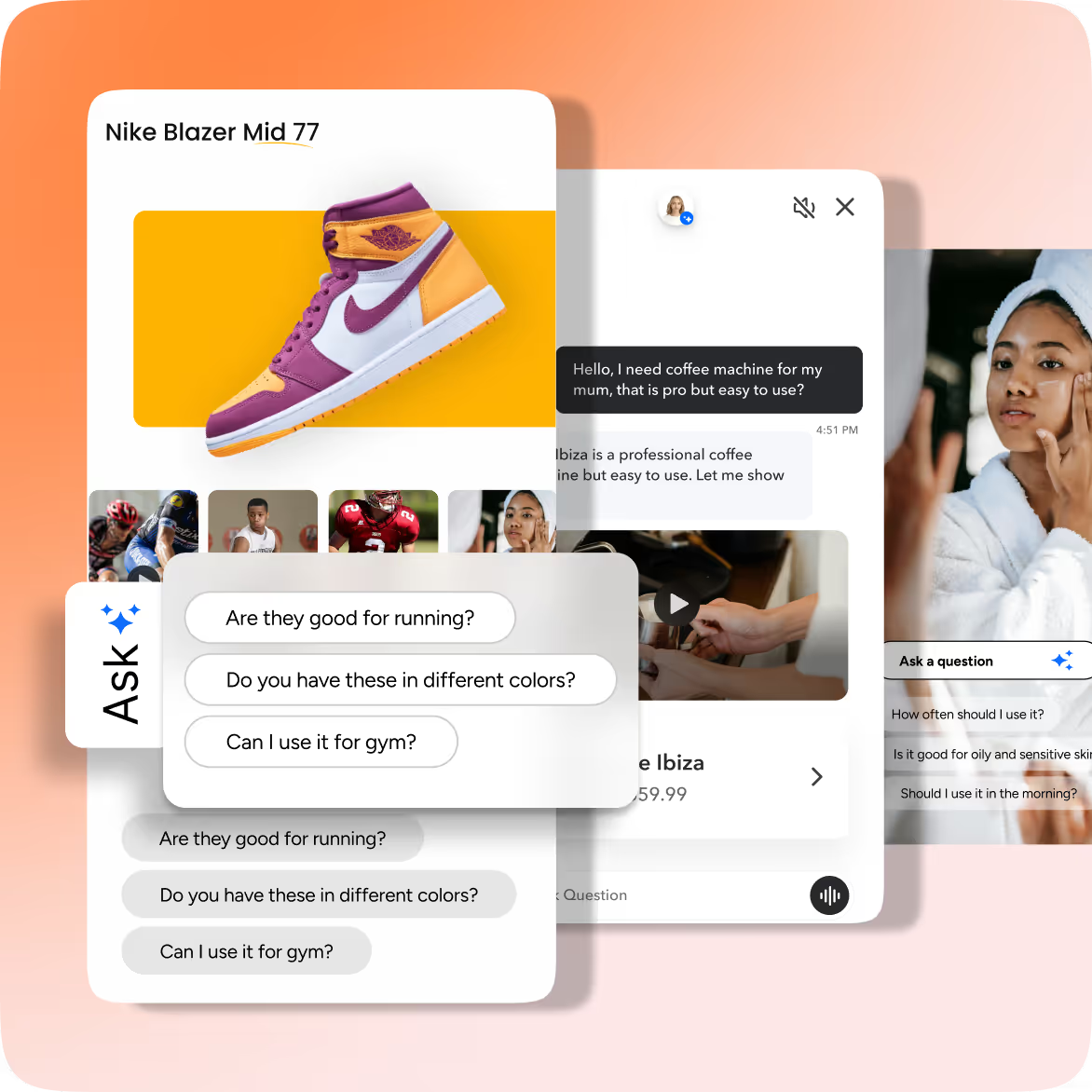
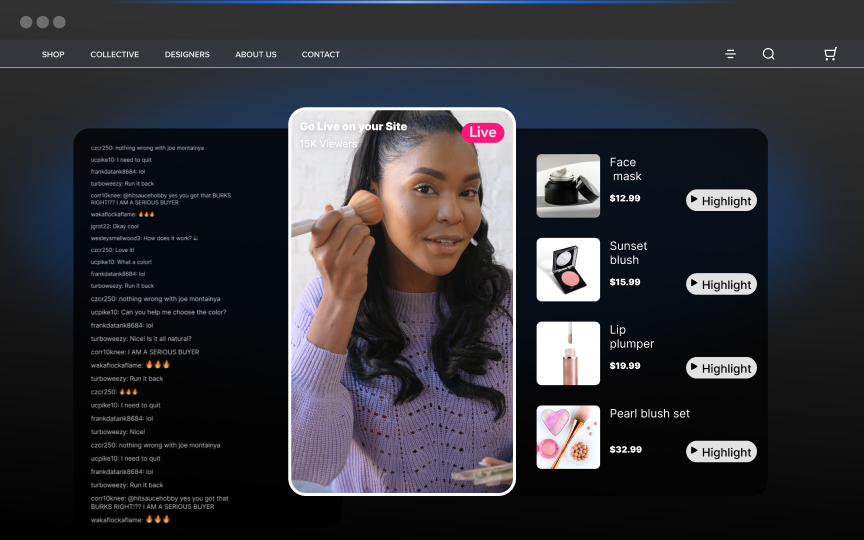
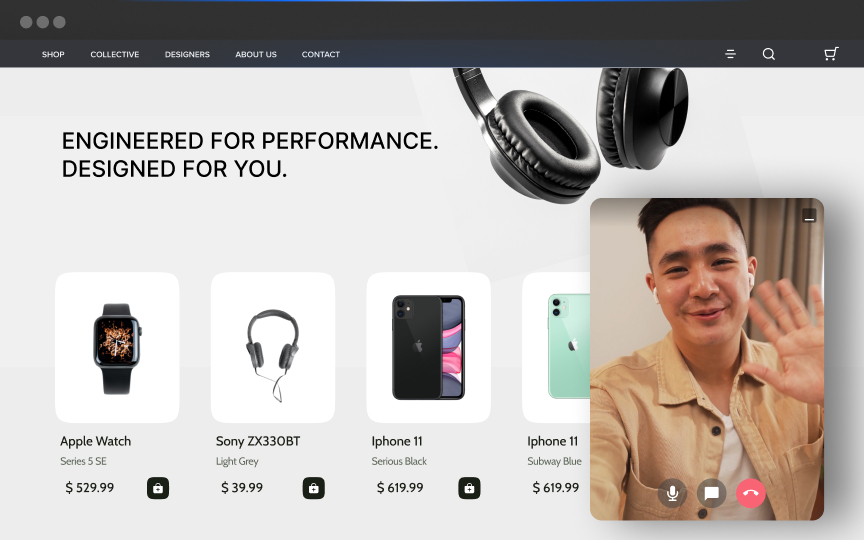


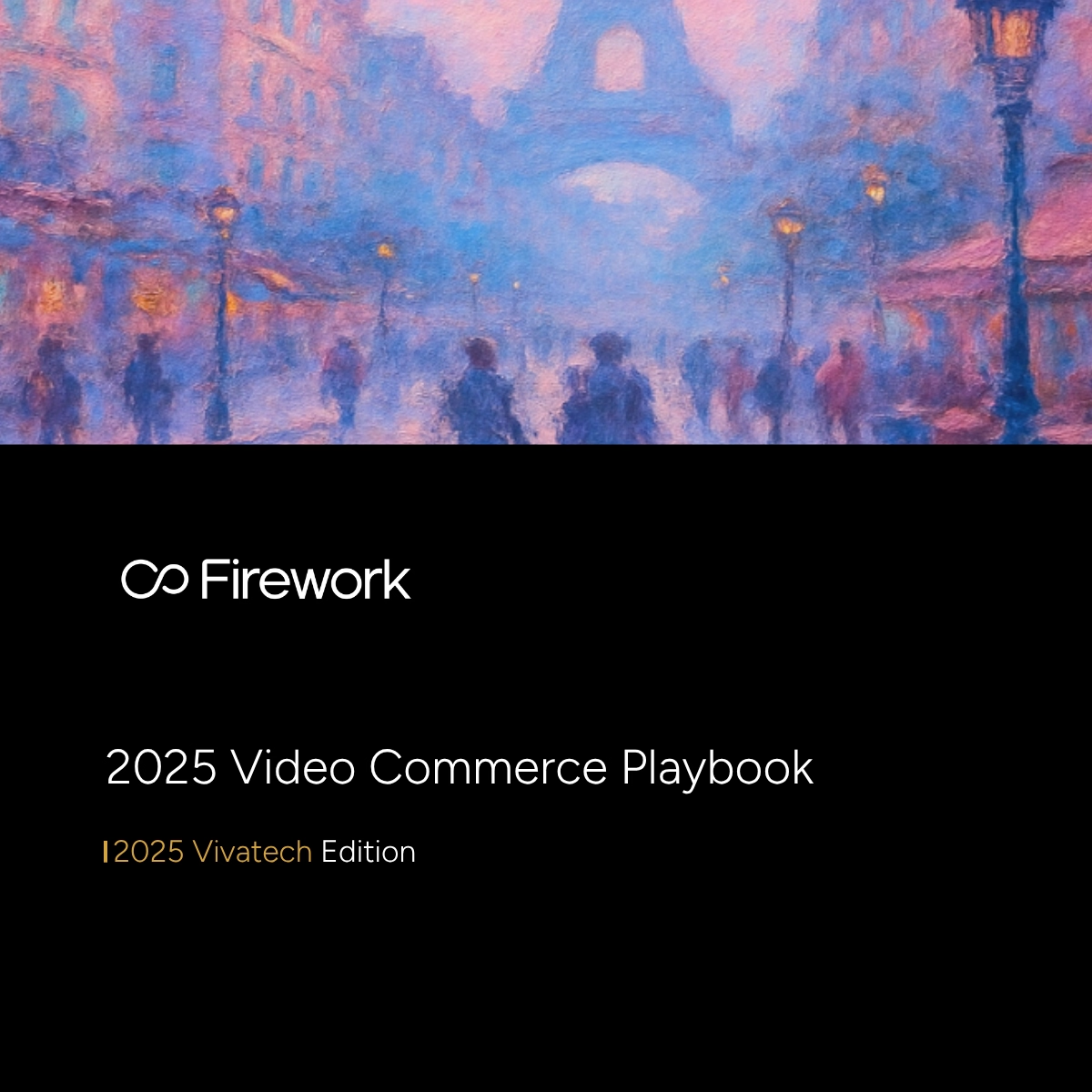





















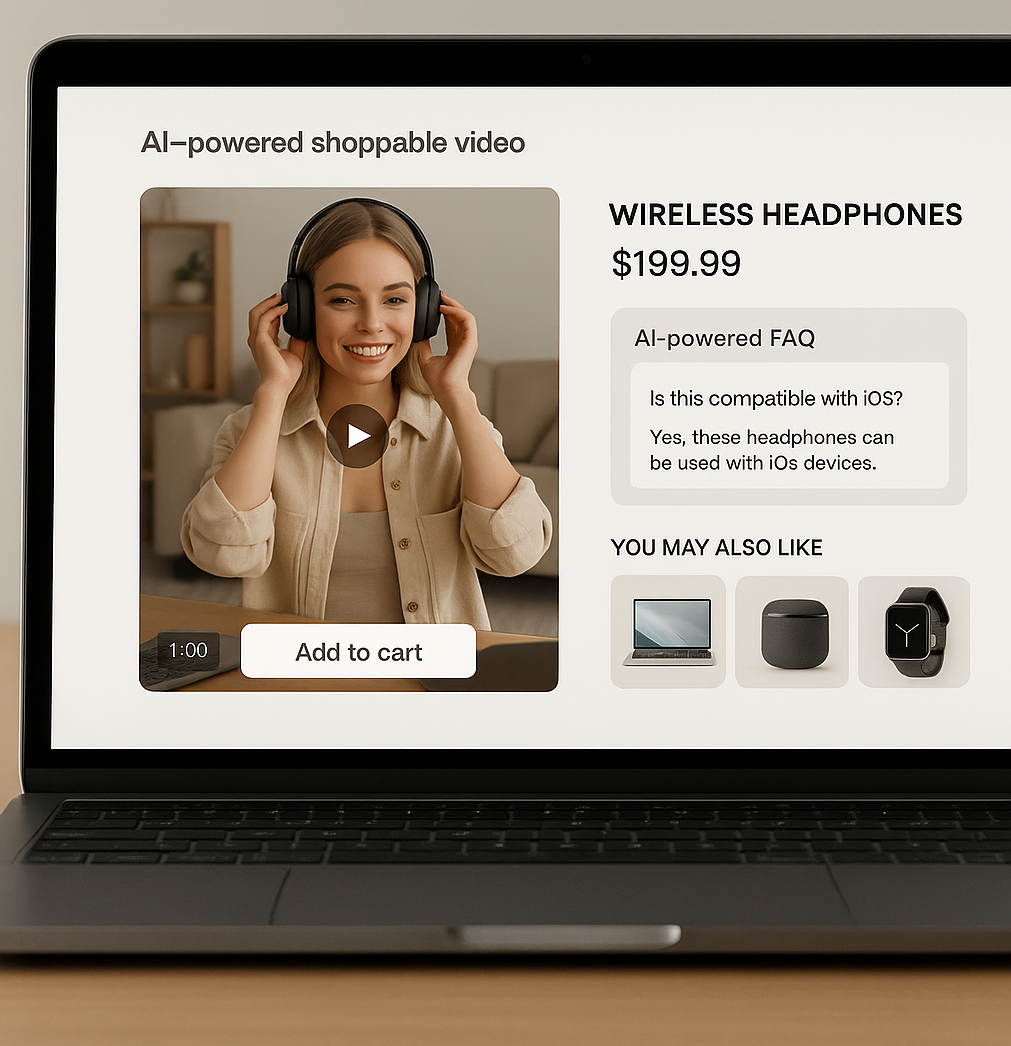
.png)